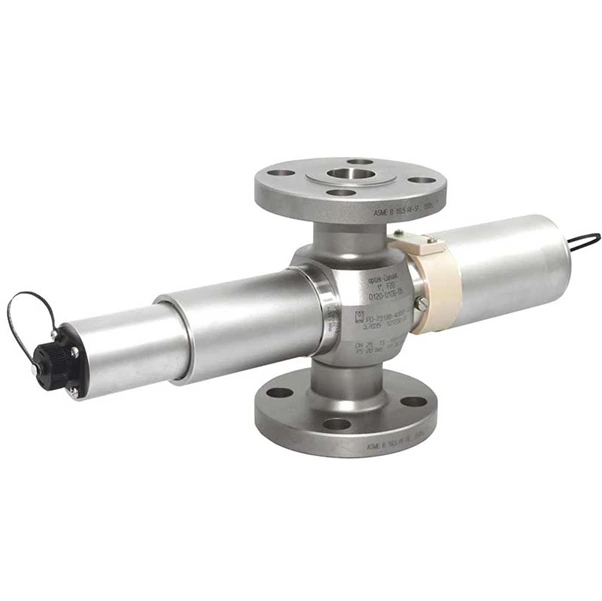Real-time process monitoring has become the backbone of modern industrial operations. The Optek AF26 VIS-NIR inline sensor stands at the forefront of this transformation, delivering unprecedented accuracy in measuring color, concentration, and chemical properties during active production cycles.
Installed directly in process pipelines and vessels, this dual-channel absorption sensor eliminates the guesswork that has long plagued industrial quality control.
Technical Precision Meets Operational Demands
The AF26 operates as a high-precision dual-channel sensor designed specifically for inline operation. Unlike traditional sampling methods that introduce delays and human error, this optical process sensor monitors production parameters continuously.
The device measures light absorption across visible and near-infrared wavelengths. One channel tracks the target measurement while the second compensates for interference from particulates, gas bubbles, or window fouling.

The AF26 uses dual-channel absorption measurement to compensate for process interference
Key specifications include:
- Dual wavelength measurement capability from 385 to 1000 nanometres
- Configurable optical path lengths to match concentration ranges
- Single crystal sapphire windows resistant to abrasive and corrosive media
- Operating temperatures up to 240 degrees Celsius
- Pressure ratings reaching 325 bar
Selected combinations of optical filters make it possible to focus on specific wavelengths ensuring suitable adaptation to the application. This flexibility allows operators to target precise chemical compounds without costly system redesigns.
Real-Time Process Monitoring Delivers Measurable Returns
Industrial facilities implementing inline process monitoring report dramatic improvements across multiple metrics. Continuous data streams enable operators to detect deviations within seconds rather than hours or days.
Process monitoring is essential in industrial production, as it ensures product quality and production efficiency through real-time data monitoring and analysis during the manufacturing process.
The benefits extend beyond simple quality assurance:
- Reduced Material Waste: Immediate detection of off-specification products prevents entire batches from requiring disposal or reprocessing.
- Enhanced Safety: Real-time monitoring of hazardous chemical concentrations protects workers and facilities from dangerous exposure levels.
- Predictive Maintenance: Sensor data reveals equipment degradation patterns before failures occur, eliminating costly unplanned downtime.
- Regulatory Compliance: Automated logging creates audit trails required by pharmaceutical, food safety, and environmental regulations.
Industries like pharmaceuticals and food must meet stringent quality standards. Real-time logs help with traceability and audit trails.
Mining operations have embraced automation technology to boost efficiency and safety. The AF26 sensor extends these capabilities to mineral processing plants where precise monitoring of flotation reagents and slurry concentrations directly impacts recovery rates.
Diverse Industrial Applications
The AF26’s versatility spans multiple sectors. In chemical manufacturing, it monitors chlorine dioxide, bromine, and metal ion concentrations with exceptional precision. These reliable analyzers can be configured to measure the concentration of numerous chemicals and can be correlated to many color scales.
Pharmaceutical producers rely on the sensor for bioreactor monitoring during fermentation processes. The device tracks cell density and biomass without requiring invasive sampling that risks contamination.

Beverage manufacturers use color measurement capabilities to ensure consistent product appearance. The AF26 sensor’s output can be correlated to almost any color scale including APHA and Hazen.
Water treatment facilities monitor turbidity and contaminant levels continuously. The system detects filter breakthrough events instantly, preventing compromised water quality from reaching distribution networks.
Industry Trends Driving Adoption
Rapidly accelerating digitization, fueled by technologies like AI, is enabling manufacturers to boost efficiency and address the skilled labor shortage. Real-time sensors form the foundation of these digital transformation initiatives.
The Australian mining and energy sector faces growing pressure to improve environmental performance while maintaining productivity. Precision monitoring helps operations balance these competing demands.
The Internet of Things (IoT) and sensor networks have significantly advanced process monitoring and control in multiple sectors, including manufacturing, agriculture, healthcare, and smart cities.
Modern facilities integrate sensor data with cloud analytics platforms. Machine learning algorithms identify subtle patterns that human operators might miss, predicting quality issues before they manifest in finished products.
Installation and Integration
The AF26 accommodates diverse process requirements through flexible mounting options. The sensor is available in a wide variety of line sizes, process connections and wetted materials.
Standard configurations include:
- Flanged connections conforming to ASME, DIN, and JIS standards
- Sanitary clamp fittings for food and pharmaceutical applications
- Threaded NPT and DIN connections
- Custom tube end specifications
The AF26 sensor provides accurate absorption measurements with remarkable repeatability, linearity and resolution. NIST-traceable calibration accessories ensure measurement confidence across the sensor’s operational lifetime.
Also Read: Chaos at Climate Summit: Fire Forces Mass Evacuation as Brazil’s COP30 Faces Safety Crisis
The Path Forward
As global manufacturing evolves, the gap between advanced and conventional operations will widen. Facilities embracing real-time process monitoring gain competitive advantages through reduced costs, improved quality, and regulatory compliance.
The technology continues to advance. Future iterations will likely incorporate edge computing capabilities, enabling local data processing and decision-making without cloud connectivity dependencies.
Use of digital twins will continue to increase as industrial firms look to slash development time and costs, lower time to market and achieve real-time integrated manufacturing.
The Optek AF26 represents current best practices in industrial sensor design. Its proven performance across demanding applications demonstrates how inline monitoring technology transforms production operations from reactive to proactive management systems.












